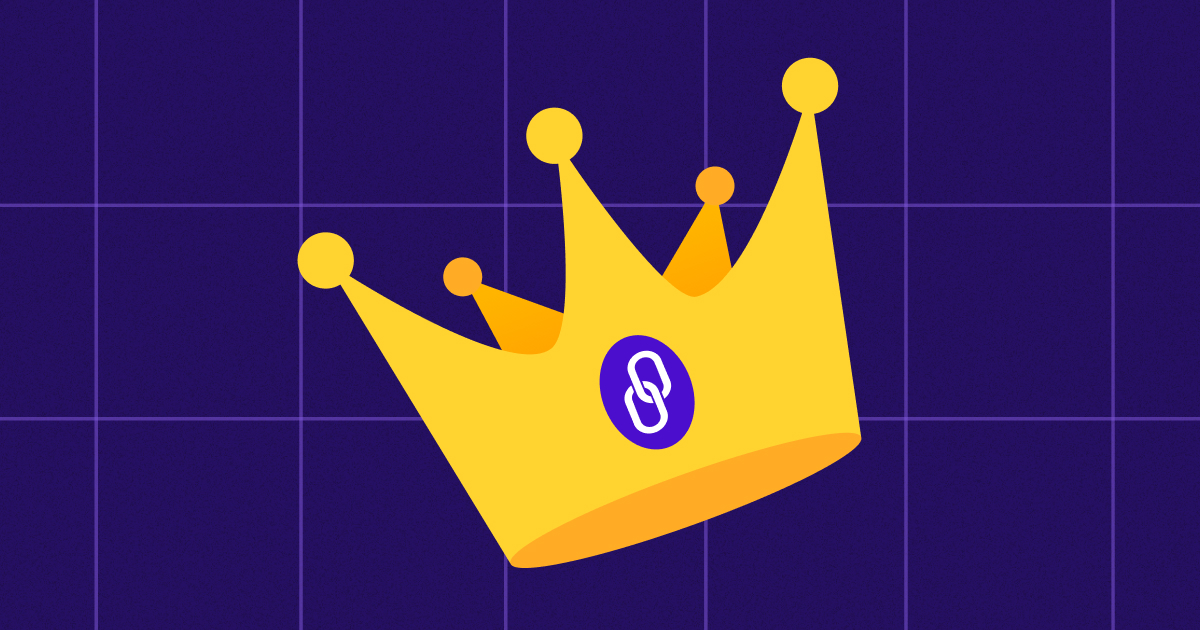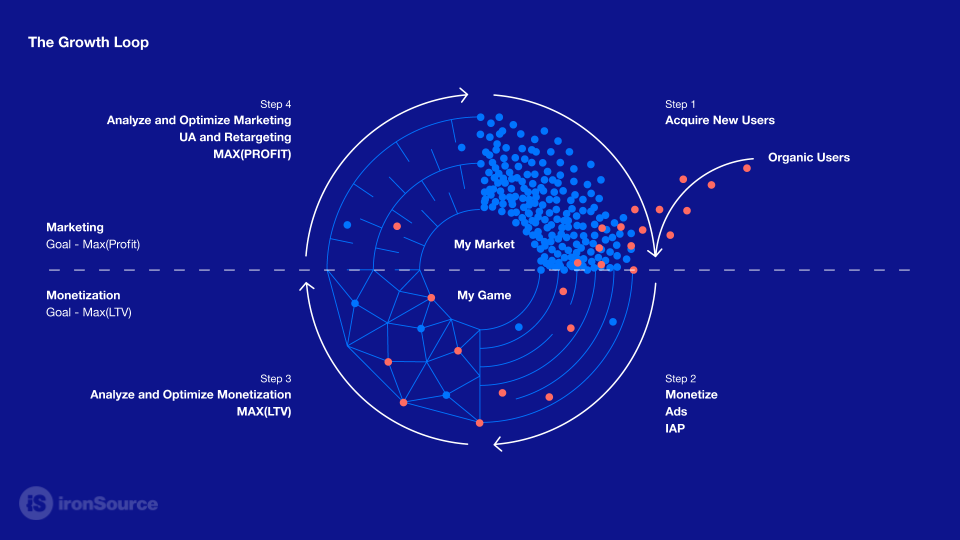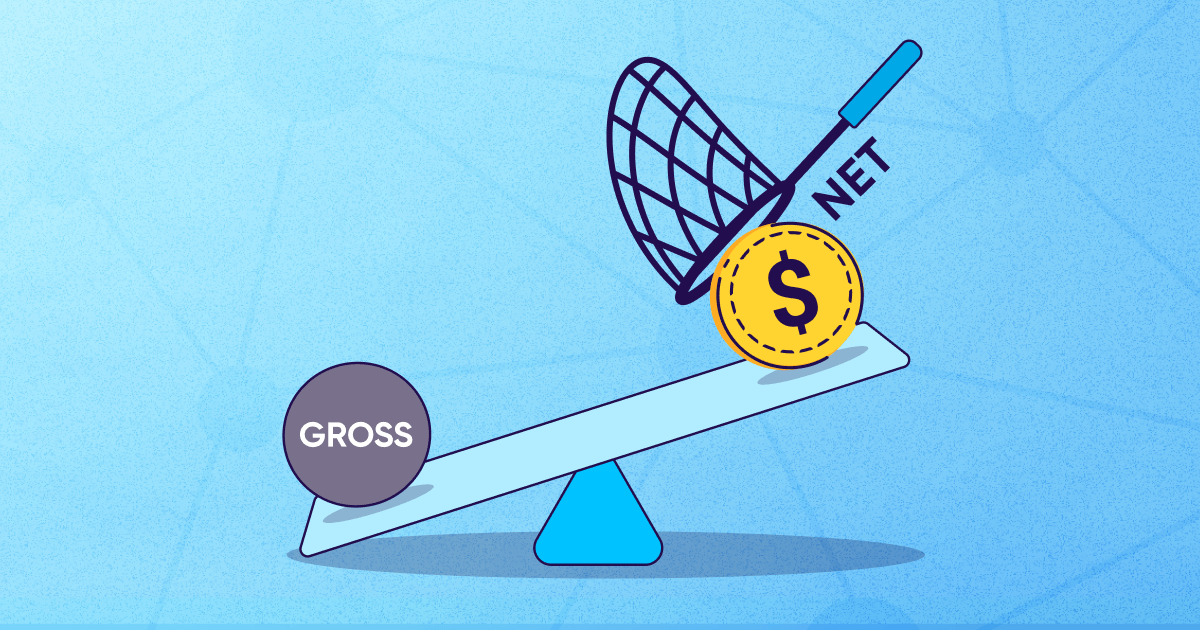
Merging game monetization and marketing teams for accelerated growth

In the last year or so, we’ve seen a trend in the Gaming industry in which an increasing number of monetization and UA teams are merging together, as various game companies realize the virtues of a holistic growth model.
This shift began in the hyper-casual space, where the business model is reliant on ad-based monetization and shorter retention, but after it proved its ability to catalyze growth, it is now slowly making its way to developers in other casual game genres.
In the big picture, a unified UA and monetization team enables faster, more efficient optimization of the growth loop, allowing better prioritization of where resources should be spent.
Below, we explain why exactly this is the case, giving specific examples to show how operating with someone or a team of people who do both UA and monetization can benefit a mobile games business.
A virtuous cycle of growth
In any Gaming company, there are those who are working on bringing in new users, and those who are working on providing a valuable experience for those users – which (hopefully) generates revenue. That revenue gets reinvested into bringing more, even higher-quality users who (hopefully) go on to monetize, as well.
It almost seems obvious that looking at it from this perspective, growth is not a funnel that starts with user acquisition and ends with monetization, but rather a loop that’s powered by both. Each side of the business, after all, is dedicated to driving game growth, and every decision made by either one of them impacts the cycle.
In a unified team, of course, it’s easier to see how that cycle works, as the team would most likely be optimizing their growth strategy towards a single goal, such as profit.
However, separate UA and monetization can still benefit from increased communications and a better picture of how the other side works and what they’re working on.

Executing on the right KPIs
In a strong growth team, decisions are made based on data and the right metrics.
But without a look at the other side of the business, the data these conclusions are based on is skewed and only tells half the story – making it unreliable.
By being connected to each other and aware of what’s happening outside their own domain, monetization and marketing units can make more informed decisions to accelerate the loop – enabling them to execute, iterate, rinse and repeat. Let’s break down a few examples.
How monetization impacts UA KPIs
The launch of a new ad placement or tutorial by the monetization and product team certainly impacts all of the downstream metrics on the UA side. Not only is it important for the UA side to understand why ARPU suddenly increased (the new ad placement is performing great), but it’s also critical that they’re immediately made aware that it is in fact increasing.
Notified of the new high-performing ad placement, the UA side could quickly adjust CPIs to bid higher in that moment, and drive more scale – rather than losing precious time and the opportunity cost of waiting sometimes weeks or even months before reacting.
In addition to impacting the metrics, any change on the monetization and product side could also skew how certain users behave in the game, including the monetization behavior of key demographics for the UA team – say, users in tier-3 countries who are highly engaged offerwall users.
This would require the UA side to rethink their strategy, creatives, channels, for acquiring that demographic of users.
How UA impacts monetization KPIs
Similarly, any updates to UA activity, such as a new CPE campaign to reward users for finishing level 10, will impact monetization metrics and how the monetization side makes their decisions.
The acquired users who complete the level may skew the product team’s numbers and distort their understanding of the level’s quality – they might see high numbers simply because of the offerwall campaign, which might not reflect the actual quality of the level itself.
Likewise, turning on a new paid channel or running a specific campaign, which would deliver an influx of a new type of user, depending on the demographics of that channel’s supply pool, would be met with an impact to monetization metrics – for example, running a rewarded video campaign may bring in users who are likely to engage with rewarded video.
The uptick in rewarded video engagement and ARPU could trigger the product and monetization team to make ill-informed decisions relating to their placement and ad unit strategy.
The same is true for retargeting – because users brought back into the game from retargeting campaigns have higher purchase rates and retention rates, being in the loop and knowing that there is an explanation from the UA side for these metrics is evidently critical for decision making.
Combining forces for better segmentation
Once the foundations are in place for increased communications between monetization and marketing, there are several activities which the two sides can collaborate on to accelerate the growth loop – namely, audience segmentation, which can massively impact KPIs across the board.
The two sides of the business can work together to better segment their product by taking source level UA information like organic, paid, and even which paid channel into consideration. Seeing that organic users engage more with IAPs but less with ads and by contrast, paid users generate higher ad revenue, which is logical seeing as they were converted in the first place by an ad.
As such monetization managers can segment their ad unit strategy to maximize ad revenue from paid users while not hurting IAP revenue from organic users. Meanwhile, they can feed this information back to the UA side to shape their strategy.
Let’s take the offerwall as an example, which only works in games with deep in-app economies and generally requires a careful placement strategy. In order to get the most engagement out of the offerwall, the product team should know which users converted into the game through a paid offerwall campaign, as they can assume that those users will go on to engage with their offerwall as well.
In this case, it’s best practice to be more aggressive and show the offerwall in the first or second session to this user, increasing the number of traffic drivers and pop-up notifications – which isn’t a common offerwall strategy otherwise.
Summing up
The most pertinent benefit of unifying UA and monetization teams is that it creates a structure that revolves around a shared interest and operational focus.
This has a powerful impact on your business, streamlining the way teams approach game growth and ensuring one cohesive unit working towards the same goals.




